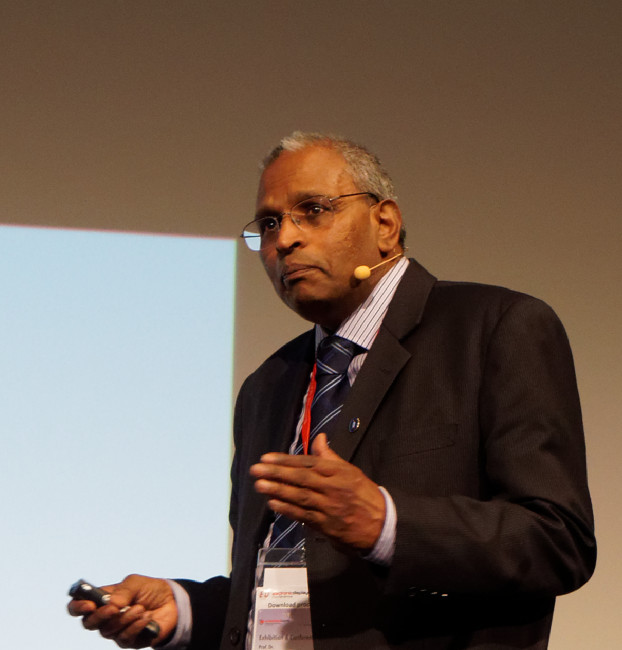 The first speaker was Prof Poopathy Kathirgamanathan (PK) who is a display technologist from Brunel University in London. He was originally very involved in OLED and is now involved in Quantum Dots (QD) and he talked about using QDs to meet the requirements for Rec 2020 colour.
The first speaker was Prof Poopathy Kathirgamanathan (PK) who is a display technologist from Brunel University in London. He was originally very involved in OLED and is now involved in Quantum Dots (QD) and he talked about using QDs to meet the requirements for Rec 2020 colour.
OLED is a mature technology and so is QD. Why do you need QDs and Quantum Rods? QD gives you Rec 2020 Red, but Green is difficult, he said.
OLEDs have been around since around 1953 and the technology is quite mature. QDs can be efficient, but cadmium-free material is still not efficient enough. Perovskites are very interesting as a possible material because they may be makeable at lower cost. PK is working in an EU group on white OLEDs for lighting and has Marks and Spencer as a potential end customer. Aixtron is the manufacturing partner. Brunel can make 100 x 100mm OLED lights in its own labs, but Aixtron goes to 200 x 200.
There are a lot of players in QDs and PK was originally working with QD Vision, but later started working with UK-based, Nanoco, which develops cadmium-free QDs. PK ‘doesn’t take prisoners’ when he is talking technology and he went beyond our pay grade at this point in his talk. He said that getting a good red material has been a challenge, but has been sorted. Colour leakage be an issue for QD-based materials can, but he said ‘Contrast is king’, so in the end you need to be emissive, as they can have higher contrast. Cadmium-free is catching up with cadmium-based QD material, but there are still challenges on lifetime.
He went through the development of ZnO QDs and being developed by Nanograde (Switzerland) and Genes’ink (France) – all processing in air. At this point, PK got to around one slide per 20 seconds and we couldn’t keep up! He said that his R&D group has got to Rec 2020 colour with good efficiencies using cadmium-based materials.
Turning to non-cadmium materials, lifetimes need work – he can only see 2,000 hours at high brightness. However, he believes that the HK effect means fewer candelas are needed to achieve a display with good visual impact.

